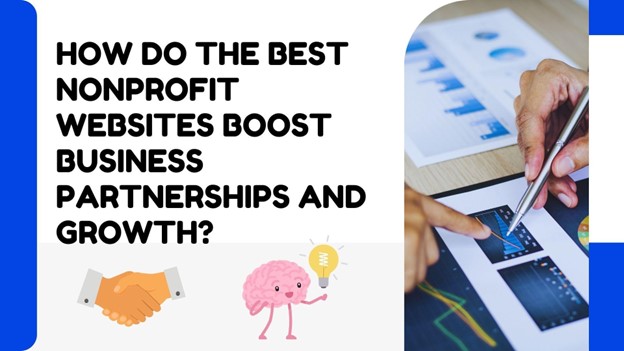
In this digital age, nonprofit website design has become a broad spectrum of how organizations gain corporate partnerships that help fuel the growth of the organization. The most successful nonprofits use their websites as a platform to prove their mission, and value proposition, and show impact to prospective business partners. Let’s dive into what makes a nonprofit website great.
A seamless and intuitive web experience is essential for attracting potential partners. The best nonprofit websites focus on delivering a user-friendly experience to engage both donors and corporate partners. Intuitive navigation, clear calls-to-action, and visually appealing content encourage potential partners to explore the organization’s mission and past collaborations.
Successful nonprofits offer various partnership models to attract businesses:
Nonprofits that provide detailed partnership packages and offer tailored solutions for corporate partners demonstrate flexibility, which businesses often appreciate. This personalization shows that the nonprofit understands the specific goals of its partners and can align its efforts with corporate social responsibility strategies.
Transparency is key to boosting nonprofit credibility. Websites should highlight:
This openness builds trust and confidence among potential corporate partners. Detailing fund allocation and projects’ impacts boosts credibility.
The best nonprofits go further. They offer live donation trackers or dashboards. They update in real time. This gives corporate partners an immediate view of their contributions’ effectiveness.
A strong nonprofit website SEO strategy increases visibility and attracts corporate interest. Regular blog posts, case studies, and press releases about ongoing projects and partnerships keep the nonprofit in the public eye.
The best nonprofit websites emphasize the value they bring to corporate partners, such as:
Successful nonprofits provide various engagement options, allowing corporations to choose the level of involvement that best fits their goals. This flexibility fosters stronger, long-term relationships.
Displaying logos or testimonials from current business partners acts as social proof, demonstrating the organization’s ability to work successfully with corporations.
| Feature | Traditional Nonprofit Website | Modern Nonprofit Website |
| Design Focus | Information-heavy | User experience-driven |
| Partnership Options | Limited, one-size-fits-all | Flexible, customizable |
| Transparency | Annual reports only | Real-time updates and impact stories |
| SEO Strategy | Minimal | Comprehensive, content-driven |
| Mobile Optimization | Often overlooked | Prioritized for on-the-go donors |
By implementing these strategies, nonprofits can create websites that not only attract corporate partnerships but also drive sustainable growth. The key lies in showcasing value, maintaining transparency, and offering flexible engagement opportunities.
In corporate partnerships, nonprofits will gain finances and resources, while the businesses reap better brand reputation and customer loyalty.
Cause marketing, corporate sponsorships, and in-kind donations are some of the models that work best since this enables companies to engage with nonprofits in ways that work for their business goals.
To measure the success of a partnership, nonprofits can track metrics like fundraising totals, volunteer hours, social media engagement, and cause marketing campaign reach.
Copyright © 2024 California Business Journal. All Rights Reserved.
Today’s businesses must overcome a number of challenges as they seek to effectively leverage the…
California has always been known as one of the states leading the way in terms…
Being a tech specialist means staying ahead of the curve and combining creativity and knowledge.…
Entering the food and drink industry as a new business can be both exciting and…
To make your home eco-friendly and unique, consider incorporating vintage and antique décor. These pieces…
Choosing the right end tables is essential in creating a cohesive and small space solution.…